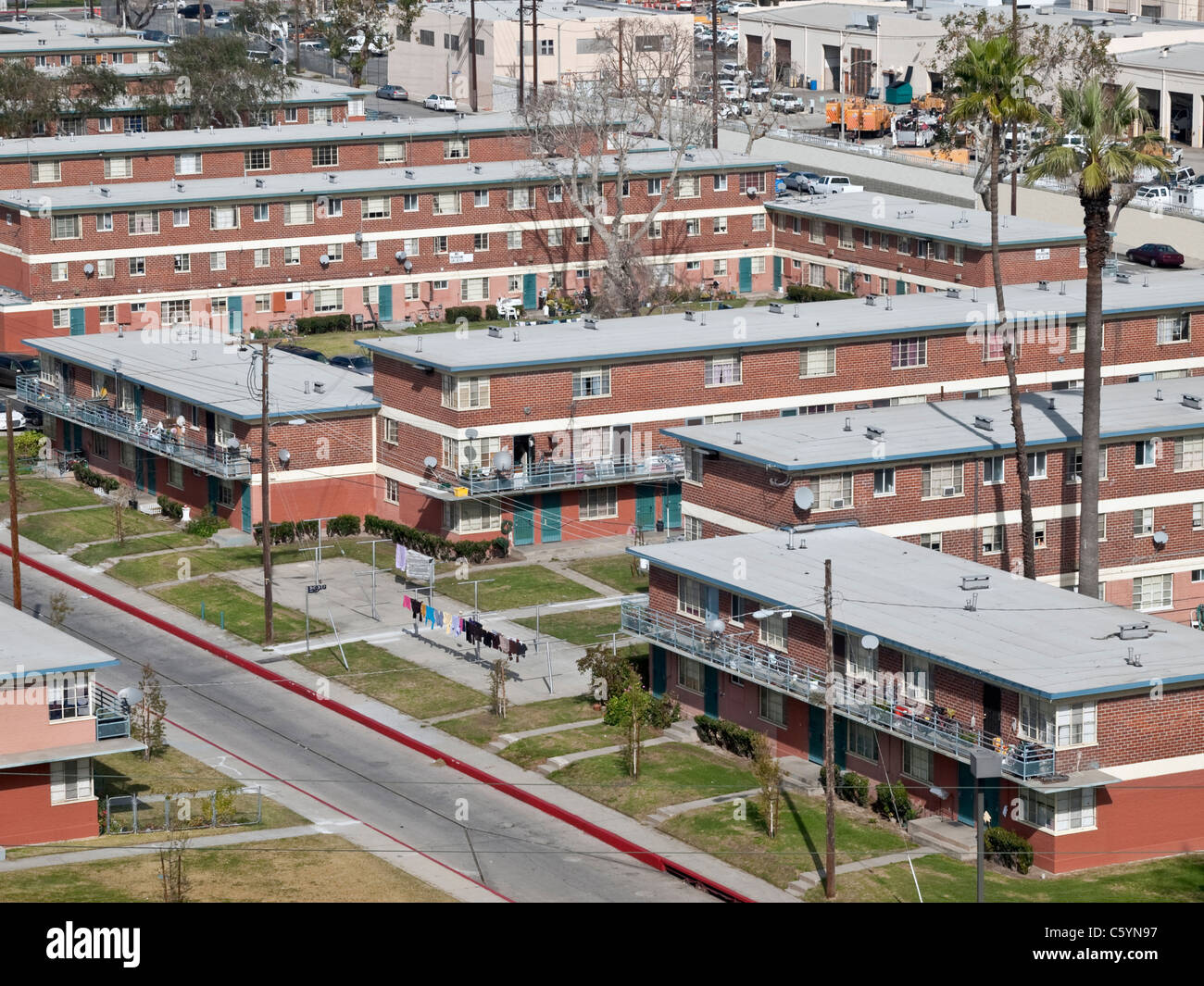Public Housing in USA
Introduction
Public housing, once a cornerstone of social policy in the United States, has largely faded from contemporary discussions. The term is now rarely heard in public discourse, except when referencing historical policies and the buildings they produced. Many of these historical public housing projects are now facing demolition, symbolizing a shift in societal attitudes and policy priorities. In modern discussions about housing, terms like “affordable housing” and “mixed-income housing” have become more prevalent. This shift in terminology reflects a broader cultural change, where the concept of “public” housing has come to carry negative connotations of dependence or subordination. As a result, the responsibility for providing basic human habitation has increasingly fallen on market mechanisms rather than public initiatives.

The Historical Context of Public Housing
The Origins and Evolution of Public Housing
Public housing in the United States has its roots in the early 20th century, with the first projects emerging in the 1930s as part of the New Deal programs under President Franklin D. Roosevelt. These early projects were designed to address the housing crisis exacerbated by the Great Depression, providing affordable and decent living conditions for low-income families. Over the decades, public housing expanded and evolved, becoming a significant part of urban landscapes in many American cities.
The Decline of Public Housing
Despite its initial promise, public housing faced numerous challenges over the years. Many projects suffered from poor maintenance, lack of funding, and high crime rates, leading to their decline in popularity and effectiveness. By the late 20th century, public housing had become synonymous with urban blight and social problems, contributing to its negative perception in the public eye. This decline was further exacerbated by policy shifts that favored market-based solutions over public initiatives.
The Shift in Terminology and Policy
From Public Housing to Affordable Housing
The shift from “public housing” to “affordable housing” reflects a broader ideological change in how housing is viewed and managed. Affordable housing initiatives often focus on providing subsidies or incentives to private developers to create housing that is accessible to low-income families. This approach aims to leverage market forces to achieve social goals, rather than relying solely on public sector interventions.
The Emergence of Mixed-Income Housing
Mixed-income housing represents another evolution in housing policy, emphasizing the creation of diverse communities where residents of different income levels live together. This model seeks to mitigate the social and economic segregation often associated with traditional public housing projects. By integrating low-income households with middle- and high-income residents, mixed-income housing aims to promote social cohesion and economic mobility.
The Role of Markets in Modern Housing Policy
The Marketization of Housing
The increasing reliance on market mechanisms to address housing needs reflects a broader trend towards neoliberalism in public policy. Proponents argue that market-based solutions are more efficient and sustainable, capable of providing a wider range of housing options and fostering economic growth. Critics, however, contend that this approach can exacerbate inequality and leave vulnerable populations without adequate support.
The Challenges of Market-Driven Solutions
While market-driven housing initiatives have shown some success in providing affordable options, they also face significant challenges. The reliance on private developers can lead to inconsistent quality and availability, particularly in areas with high demand and limited supply. Additionally, market-based solutions may not always prioritize the needs of the most vulnerable populations, potentially leaving them at risk of displacement and housing insecurity.
The Future of Public Housing
Reevaluating the Role of Public Initiatives
As housing affordability continues to be a pressing issue, there is a growing recognition of the need to reevaluate the role of public housing. Some policymakers and advocates are calling for a renewed emphasis on public initiatives, arguing that they can provide critical support for low-income families and promote social equity. This renewed focus on public housing could involve increased funding, improved management practices, and innovative design approaches to create more sustainable and inclusive communities.
Balancing Public and Private Solutions
The future of housing policy is likely to involve a balance between public and private initiatives. While market-based solutions can play an important role in addressing housing needs, they must be complemented by robust public programs that ensure access to safe, affordable, and decent housing for all. This balance will require careful coordination and collaboration between government agencies, private developers, and community organizations.
Conclusion
The decline of public housing in the United States reflects a broader shift in societal attitudes and policy priorities. While terms like “affordable housing” and “mixed-income housing” have become more prevalent, they also signal a reliance on market mechanisms to address housing needs. As we look to the future, it is crucial to recognize the importance of public initiatives in ensuring housing equity and social justice. By reevaluating the role of public housing and finding a balanced approach that leverages both public and private resources, we can work towards creating more inclusive and sustainable communities.
